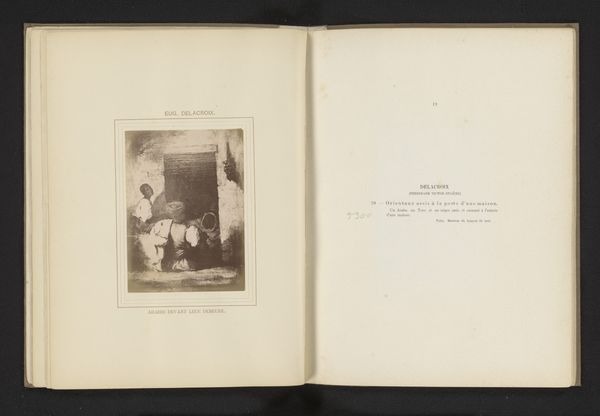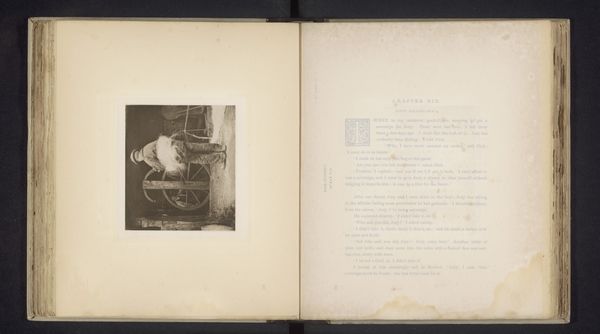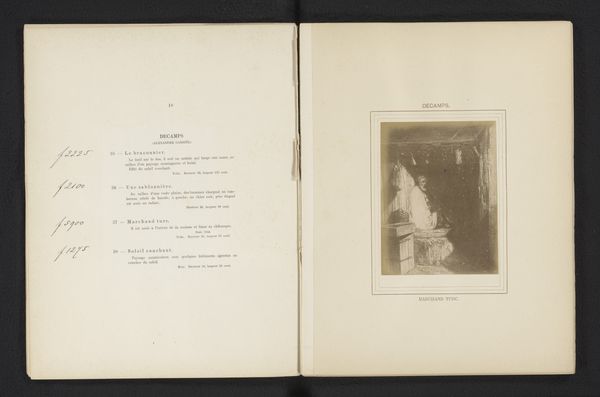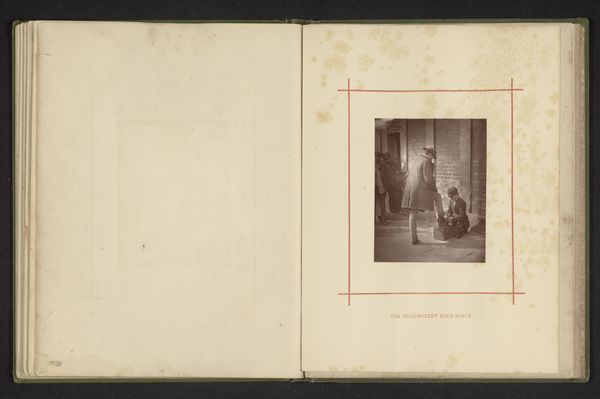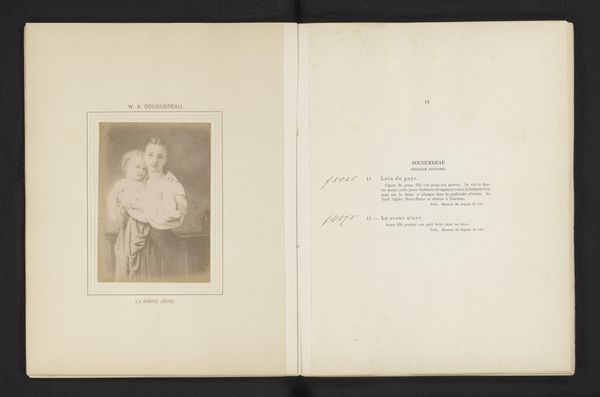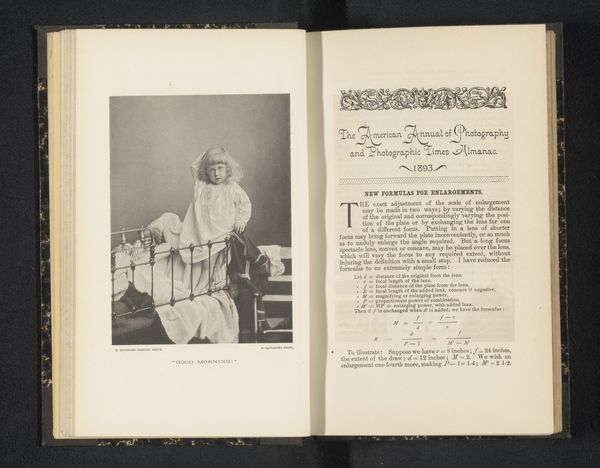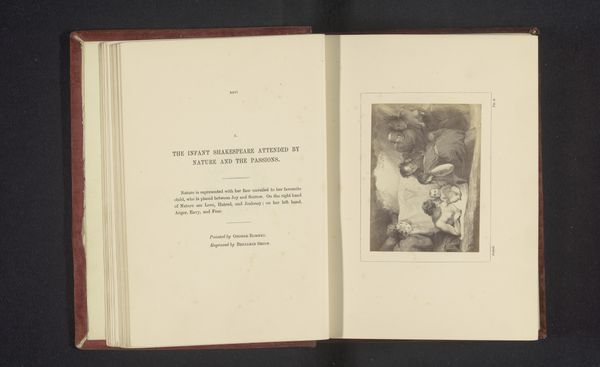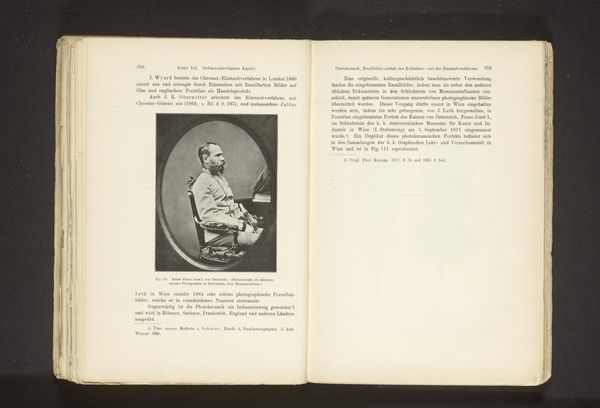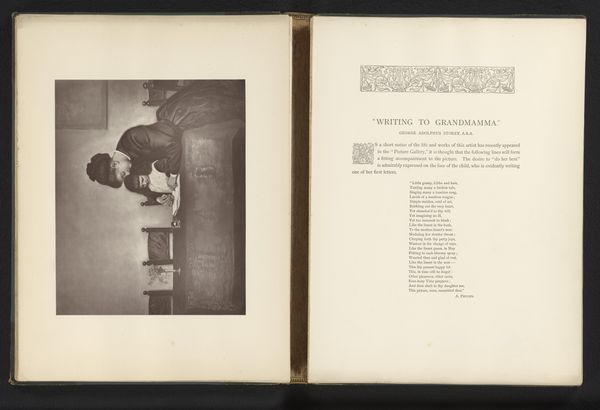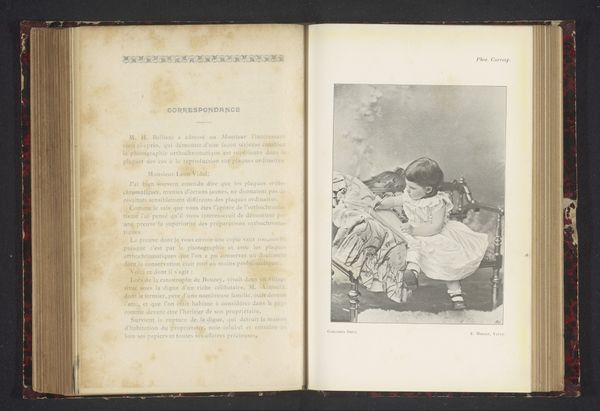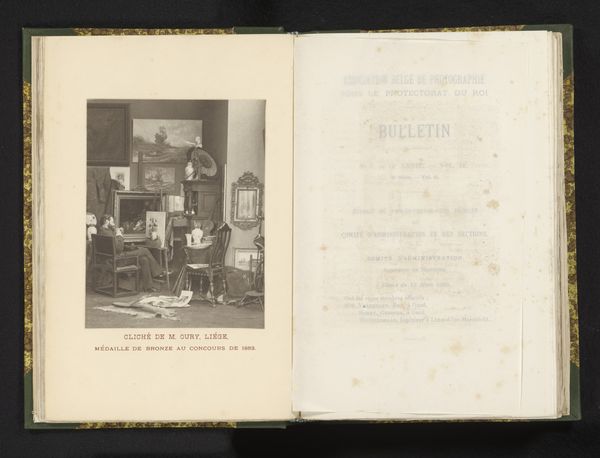
photography, albumen-print
#
portrait
#
photography
#
albumen-print
Dimensions: height 147 mm, width 103 mm
Copyright: Rijks Museum: Open Domain
Curator: I’m immediately drawn to the way this image renders a specific texture – a visual softness, despite the formality of the occasion it represents. Editor: That's interesting. The piece, housed here at the Rijksmuseum, is a photograph. Its title is "Portret van Juliana, prinses der Nederlanden," or, "Portrait of Juliana, Princess of the Netherlands." It's attributed to Franz Reissig and predates 1910. It is an albumen print, a photographic process quite popular at the time. Curator: Ah, albumen. Knowing that makes me think more deeply about the layers of materiality involved here: the production of the print itself, the cultural significance embedded in depicting royalty…it's a document intended for mass consumption. How do you think those social forces play into its meaning? Editor: Hugely. Think about the role of royal imagery at that time – fostering national identity, projecting power, influencing public opinion. This photograph, while seemingly simple, was a carefully constructed image deployed in a much broader political landscape. We can speculate the intention was to promote the Princess’ image and generate public endearment through photography, which, at that time, was already an accessible technology, therefore available for widespread distribution. Curator: So, considering the photograph as both object and cultural artifact, how does its material form—an albumen print—affect its political function? Albumen, as a process, speaks of a level of artistry coupled with mass reproducibility. What do you suppose was the impact of photography like this? Editor: I would say photographs democratized imagery and impacted portraiture by allowing the emerging middle class access to these types of portraits as well, which were usually exclusively for royalty. In a sense, you’re more closely connected to this public figure through an artistic and reproducible means, making the Royalty accessible. Curator: So, beyond its intrinsic value as an artistic rendering, what are the lingering implications of the socio-political elements surrounding "Portret van Juliana, prinses der Nederlanden"? Editor: In retrospect, the photograph stands as a quiet yet powerful demonstration of how visual imagery shapes public perceptions, which are, still today, meticulously cultivated, controlled, and widely consumed.
Comments
No comments
Be the first to comment and join the conversation on the ultimate creative platform.
